The car audio industry, just like any other technical field, is full of words and phrases that are specific to the equipment we use and the work we do. Because we are often communicating with our peers, suppliers and occasionally technical support staff, we get very used to using these terms. For a consumer walking in the front door, it’s unreasonable to expect them to know or understand this lingo. This article will explain some examples of techno-speak and help make you a more educated car audio client.
1. OEM Integration
 Oh, what a terrible expression this is. Let’s break it down into its two parts. OEM, an acronym we use often, means Original Equipment Manufacturer. When we refer to something as OEM, be it a speaker, radio, trim panel or wheels, we’re talking about a part or component that came with the car from the factory.
Oh, what a terrible expression this is. Let’s break it down into its two parts. OEM, an acronym we use often, means Original Equipment Manufacturer. When we refer to something as OEM, be it a speaker, radio, trim panel or wheels, we’re talking about a part or component that came with the car from the factory.
OEM Integration means hooking up aftermarket car stereo equipment to work with some of your factory equipment. When replacing a radio, we might talk about needing an interface to work with the factory amp. When adding an amplifier, we will talk about the need to extract a usable audio signal from the factory sound system.
2. Frequency Response
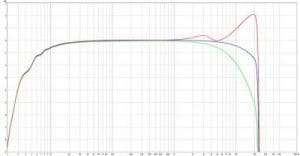 Frequency response is an important term, especially when talking about speakers. The frequency response of a car audio product describes the upper and lower frequency limits of a device’s operating range, and how smooth the performance is through that usable range. For example, when talking about a midrange speaker, the frequency response describes the upper and lower playback limits and the amplitude of any peaks or valleys in its performance between those limits.
Frequency response is an important term, especially when talking about speakers. The frequency response of a car audio product describes the upper and lower frequency limits of a device’s operating range, and how smooth the performance is through that usable range. For example, when talking about a midrange speaker, the frequency response describes the upper and lower playback limits and the amplitude of any peaks or valleys in its performance between those limits.
The person designing your mobile audio system uses this information to quantify the suitability of one product to work with another and to evaluate the quality of the product. Smoother response is always better in terms of product design.
3. Decibel
 Talking about the term decibel is opening a big can of worms. Depending on the context, it can mean many different things. When referring to how loud something is, the decibel scale describes how much louder a sound is than a reference. For those among you who lean toward the techy side, when talking about sound volume, use the abbreviation dB (short for decibel) and the suffix SPL. The decibel scale is logarithmic. As such, 80 dB SPL is not twice as loud as 40 dB SPL. 80 dB SPL is considered to be twice as loud as 70 dB SPL. Yeah, it gets messy.
Talking about the term decibel is opening a big can of worms. Depending on the context, it can mean many different things. When referring to how loud something is, the decibel scale describes how much louder a sound is than a reference. For those among you who lean toward the techy side, when talking about sound volume, use the abbreviation dB (short for decibel) and the suffix SPL. The decibel scale is logarithmic. As such, 80 dB SPL is not twice as loud as 40 dB SPL. 80 dB SPL is considered to be twice as loud as 70 dB SPL. Yeah, it gets messy.
4. Subwoofers, Mid-Bass, Midrange and Tweeters
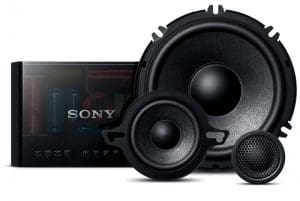 Because no single speaker can reproduce the entire audible frequency range with good efficiency and distortion performance, we need to use multiple different size speakers in our audio systems. Large diameter speakers with lots of excursion (cone travel) capability are often called subwoofers. Subwoofers range in size from eight to 15 inches, with 10 and 12 being the most popular. Subwoofers play up to about 100 Hz. Mid-bass speakers, usually 6.5 or 8 inches in size, play frequencies between 70 Hz and 500 Hz, depending on their design. Midrange speakers, from 2.5 to 6.5 inches in size, play from 80 Hz to about 6 kHz. Finally, tweeters are designed to reproduce the highest of frequencies. They come in sizes from 0.25 through to 1.5 inches and play from 2 kHz on up.
Because no single speaker can reproduce the entire audible frequency range with good efficiency and distortion performance, we need to use multiple different size speakers in our audio systems. Large diameter speakers with lots of excursion (cone travel) capability are often called subwoofers. Subwoofers range in size from eight to 15 inches, with 10 and 12 being the most popular. Subwoofers play up to about 100 Hz. Mid-bass speakers, usually 6.5 or 8 inches in size, play frequencies between 70 Hz and 500 Hz, depending on their design. Midrange speakers, from 2.5 to 6.5 inches in size, play from 80 Hz to about 6 kHz. Finally, tweeters are designed to reproduce the highest of frequencies. They come in sizes from 0.25 through to 1.5 inches and play from 2 kHz on up.
5. Watts
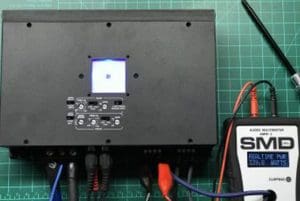 The SI unit of power is the watt. The radio or amplifier in your car stereo system will have a power rating in watts per channel that describes the amount of energy it can produce to move a speaker cone and, subsequently, produce sound. While it would seem that more power is always better, speakers have physical limits as to how much power they can handle before being damaged.
The SI unit of power is the watt. The radio or amplifier in your car stereo system will have a power rating in watts per channel that describes the amount of energy it can produce to move a speaker cone and, subsequently, produce sound. While it would seem that more power is always better, speakers have physical limits as to how much power they can handle before being damaged.
A subset of the watts term involves the addition of the suffix RMS. RMS stands for Root Mean Square. What does that mean? Well, because audio waveforms are AC (Alternating Current) signals, they move from positive to negative depending on the frequencies being played. When we refer to an RMS value of an AC signal, we are looking at an average power level that would have the same energy as a DC (Direct Current) voltage.
6. Source Unit
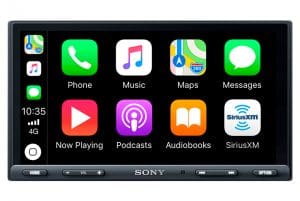 If you’re thinking that we’re talking about the radio in your dash, you are correct. Sometimes we call this a receiver when it includes an AM/FM tuner. The term source unit is all-encompassing and includes multimedia stations (another odd term) or navigation receivers with touchscreens and DVD playback, as well as source units designed for marine and powersports applications.
If you’re thinking that we’re talking about the radio in your dash, you are correct. Sometimes we call this a receiver when it includes an AM/FM tuner. The term source unit is all-encompassing and includes multimedia stations (another odd term) or navigation receivers with touchscreens and DVD playback, as well as source units designed for marine and powersports applications.
7. Ohms and Impedance
 Ohms are the standard unit of measure for quantifying the resistance to the flow of electrical current in a circuit. If you’re shopping for new speakers or a subwoofer, your Product Specialist might mention the word impedance or talk about how many ohms a specific subwoofer’s voice coil has. These terms are akin to talking about tire sizes in that they describe the application of the speaker and not its quality or performance capabilities. Specifically, the term impedance is the combination of the DC resistance of a speaker’s voice coil plus any opposition to AC current flow caused by capacitance or inductance in the speaker or crossover design. Pretty fancy, eh? All you need to know is that you should match the impedance of your speakers to the capabilities of your amplifier. Your salesperson will help you do that.
Ohms are the standard unit of measure for quantifying the resistance to the flow of electrical current in a circuit. If you’re shopping for new speakers or a subwoofer, your Product Specialist might mention the word impedance or talk about how many ohms a specific subwoofer’s voice coil has. These terms are akin to talking about tire sizes in that they describe the application of the speaker and not its quality or performance capabilities. Specifically, the term impedance is the combination of the DC resistance of a speaker’s voice coil plus any opposition to AC current flow caused by capacitance or inductance in the speaker or crossover design. Pretty fancy, eh? All you need to know is that you should match the impedance of your speakers to the capabilities of your amplifier. Your salesperson will help you do that.
8. Integration or Bypass Module
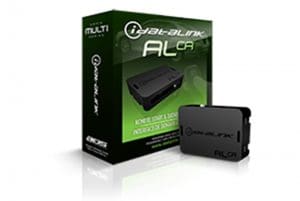 If you’re shopping for a remote car starter, the salesperson will ask you the year, make and model of your vehicle to determine what hardware is required to start the vehicle remotely. On older vehicles without any security or keyless entry features, car starters used banks of computer-controlled relays to replicate the act of turning a key in the lock cylinder. In new cars, a small computer (called the interface or bypass module) is required to talk to the computers in the car to tell them it’s OK to start and that the starter is authorized (in terms of the vehicle security system) to perform this task.
If you’re shopping for a remote car starter, the salesperson will ask you the year, make and model of your vehicle to determine what hardware is required to start the vehicle remotely. On older vehicles without any security or keyless entry features, car starters used banks of computer-controlled relays to replicate the act of turning a key in the lock cylinder. In new cars, a small computer (called the interface or bypass module) is required to talk to the computers in the car to tell them it’s OK to start and that the starter is authorized (in terms of the vehicle security system) to perform this task.
Using the term bypass is misleading, and having a remote car starter installed on your vehicle does NOT bypass the factory security features. Your car is every bit as safe as it would be without an aftermarket starter system.
9. Sail Panels, Kick Panels and A-Pillars
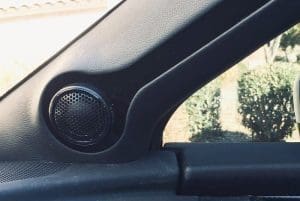 No, these aren’t nautical terms. The sail panel is the small triangular panel at the forward corner of the driver or passenger window. It’s a common location for both factory-installed and aftermarket tweeters.
No, these aren’t nautical terms. The sail panel is the small triangular panel at the forward corner of the driver or passenger window. It’s a common location for both factory-installed and aftermarket tweeters.
The A-pillar is the metal frame of the vehicle between the door frame around the window and the windshield. Installers will talk about removing the A-pillar trim panel to run wiring for Bluetooth microphones, remote starter antennae and backup camera power cables. Not surprisingly, the portion of the vehicle frame behind the front door is called the B-pillar, and if you have a four-door sedan or SUV, the frame behind the rear door is the C-pillar.
Kick panels are the plastic trim pieces underneath the dash and in front of the door. There’s usually a lot of wiring and often a computer or two hidden behind them. On the driver’s side, more often than not, the hood release lever is integrated into the kick panel.
10. Digital Signal Processor
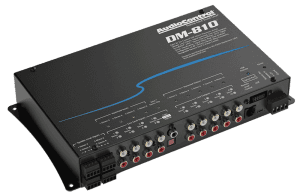 We’ve talked about digital signal processors many times, but people seem to get anxious when the term DSP comes up. It’s not magic, nor is it voodoo. A DSP is a dedicated computer chip that performs simple functions like equalization or signal filtering (crossovers) to make the speakers in your car work properly and sound great. A DSP happens to work in the digital domain with 1’s and 0’s, but that doesn’t matter.
We’ve talked about digital signal processors many times, but people seem to get anxious when the term DSP comes up. It’s not magic, nor is it voodoo. A DSP is a dedicated computer chip that performs simple functions like equalization or signal filtering (crossovers) to make the speakers in your car work properly and sound great. A DSP happens to work in the digital domain with 1’s and 0’s, but that doesn’t matter.
If you change the EQ settings on your iPod, you are adjusting a digital signal processor. They are nothing to be scared of and, when configured properly, are one of the best upgrades you can make to your car audio system.
11. Coaxial and Component Speakers
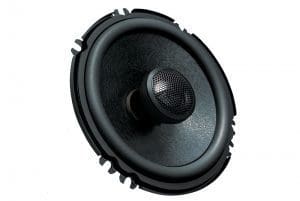 As we mentioned in No. 4, it takes speakers of many different sizes to effectively and reliably cover the entire audio spectrum. Speaker sets are available for purchase in three basic configurations. You can buy raw drivers like a midrange or tweeter, and they are often sold as pairs. You can buy a component set, which includes a pair of midrange speakers, a pair of tweeters and often a set of crossovers – all in one box. Last, but certainly not least, you can buy coaxial speakers. A coaxial is two speakers (a midrange and tweeter) built together in a single assembly. They are called coaxials because the tweeter is usually mounted in the middle of the midrange speaker.
As we mentioned in No. 4, it takes speakers of many different sizes to effectively and reliably cover the entire audio spectrum. Speaker sets are available for purchase in three basic configurations. You can buy raw drivers like a midrange or tweeter, and they are often sold as pairs. You can buy a component set, which includes a pair of midrange speakers, a pair of tweeters and often a set of crossovers – all in one box. Last, but certainly not least, you can buy coaxial speakers. A coaxial is two speakers (a midrange and tweeter) built together in a single assembly. They are called coaxials because the tweeter is usually mounted in the middle of the midrange speaker.
12. Connectivity
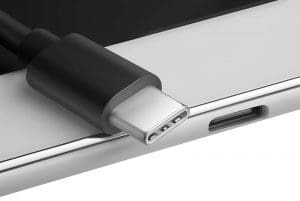 Connectivity is a term that most of us who are into computers take for granted. This word often comes up in discussions about how to get music or information from your smartphone to your radio. Wired connectivity tells us that a cable of some kind, usually a USB-to-Lightning or micro USB, will be needed to connect your radio and your phone. Wireless connectivity implies that there will be no physical connection between the two devices and either Bluetooth or Wi-Fi will be used to transfer information.
Connectivity is a term that most of us who are into computers take for granted. This word often comes up in discussions about how to get music or information from your smartphone to your radio. Wired connectivity tells us that a cable of some kind, usually a USB-to-Lightning or micro USB, will be needed to connect your radio and your phone. Wireless connectivity implies that there will be no physical connection between the two devices and either Bluetooth or Wi-Fi will be used to transfer information.
Hopefully, this information helps make your next trip to your local specialist mobile electronics retailer less stressful and easier to understand. Depending on the complexity of your audio system upgrade, you may need to research additional information. The Search function here at BestCarAudio.com is a great resource!

